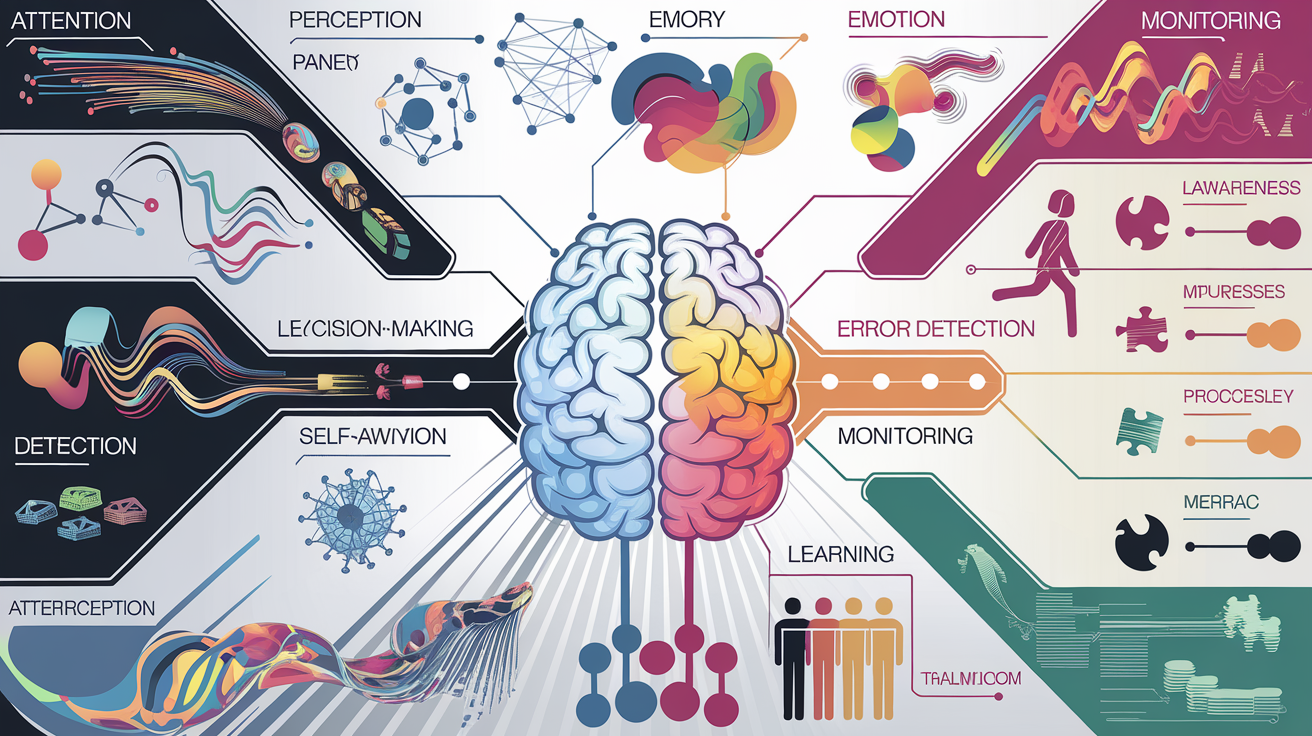
An Introduction to Cognitive Architecture: Understanding the Building Blocks
1. Introduction
Cognitive architecture serves as a blueprint for modeling human cognitive processes, helping us understand how the mind functions. By creating computational models of human thought, researchers can explore the mechanisms behind perception, memory, decision-making, and other cognitive activities. Understanding cognitive architecture is crucial for cognitive science, as it provides a structured approach to analyzing the complexities of human cognition.
2. Background History
The origins of cognitive architecture can be traced back to early efforts to simulate human cognition in the 1950s and 1960s, driven by cognitive psychologists and pioneers in artificial intelligence. The foundational work of researchers like Allen Newell and Herbert Simon, who developed early cognitive models in the 1970s, laid the groundwork for this field. One of the most well-known cognitive architectures, ACT-R (Adaptive Control of Thought-Rational), was developed in the 1990s by John R. Anderson and has played a significant role in advancing our understanding of human thought processes. Over time, cognitive architectures have evolved to become more integrative, incorporating multiple cognitive domains to create comprehensive models of human behavior. By the 2000s, cognitive architectures began to include more sophisticated models of perception, emotion, and learning, which have led to the current developments in human-like AI systems and applications in various fields.
3. Building Blocks of Cognitive Architecture
Cognitive architectures are composed of several key building blocks that represent different aspects of human cognition:
- Attention: Attention is the mechanism by which cognitive resources are allocated to specific stimuli, allowing the mind to focus on relevant information while filtering out distractions. It plays a critical role in managing information and directing mental effort.
- Perception: Perception involves the processing of sensory input to interpret the environment. It allows individuals to make sense of the world around them by transforming raw sensory data into meaningful information.
- Memory: Memory is essential for storing and retrieving information. Cognitive architectures often model different types of memory, including short-term (working) memory for immediate information processing and long-term memory for storing knowledge over extended periods.
- Emotion: Emotions influence cognitive processes such as decision-making and problem-solving. Cognitive architectures incorporate emotional states to better simulate realistic human behaviors, recognizing that emotions are integral to how individuals process information.
- Decision-Making: Decision-making involves evaluating different options and selecting a course of action. Cognitive architectures model this process to understand how humans weigh factors, make judgments, and arrive at decisions.
- Action: Actions are the physical or behavioral responses that result from cognitive processes. This building block translates decisions into observable behaviors, allowing researchers to study how mental processes lead to specific outcomes.
- Higher Cognitive Processes: Higher cognitive processes include planning, problem-solving, reasoning, and learning. Cognitive architectures also model metacognitive components such as self-awareness and self-regulation, which are crucial for understanding how individuals reflect on and control their own cognitive activities.
4. Practical Applications
- Education: Cognitive models are used to improve adaptive learning systems that can tailor educational content to individual students. By understanding how students learn and process information, these systems can provide personalized feedback and enhance the learning experience.
- Healthcare: Cognitive architectures are also applied in healthcare to understand and treat cognitive disorders. By modeling cognitive processes, researchers can gain insights into conditions like Alzheimer's disease, ADHD, and other neurological disorders, leading to better diagnostic tools and therapeutic interventions.
5. AI and Cognitive Architecture
Cognitive architectures play a vital role in bridging the gap between human cognition and artificial intelligence. By mimicking human cognitive processes, these models contribute to the development of AI systems that exhibit human-like reasoning, learning, and adaptability. Recent advancements in AI have leveraged cognitive architectures to create more sophisticated systems capable of understanding and interacting with their environments in a human-like manner.
- Advancements: Cognitive architectures have been instrumental in advancing AI, particularly in fields like robotics and human-computer interaction. These models enable robots to navigate environments, make decisions, and adapt to new situations in ways that are reminiscent of human behavior.
6. Conclusion
Understanding cognitive architecture provides valuable insights into the fundamental building blocks of human cognition. By studying attention, perception, memory, decision-making, and other components, researchers can better understand how the mind works and apply these insights to various fields, including education and healthcare. Cognitive architectures also offer a promising approach to creating AI systems that are capable of human-like thought and behavior. As we continue to explore this field, we can expect further advancements that will deepen our understanding of both human and artificial intelligence, fostering curiosity and innovation in this exciting area of study.